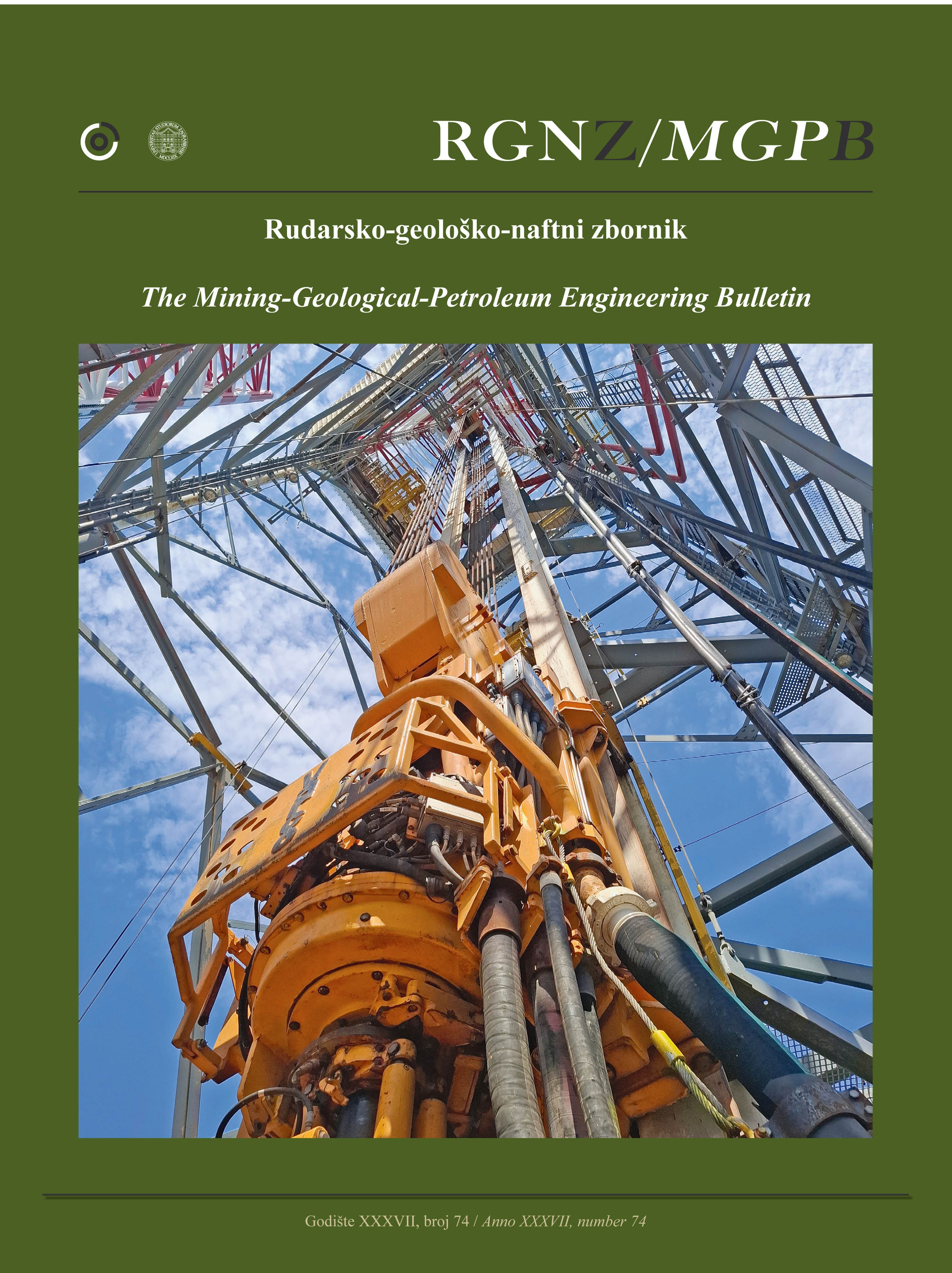Sources of Pleistocene to Recent Alluvial Sediments of Northwestern Bilogora and Surrounding Areas (Croatia)
DOI:
https://doi.org/10.17794/rgn.2025.3.11Keywords:
NW Bilogora, SW Pannonian Basin, Pleistocene, recent stream sediment, provenanceAbstract
This study aims to determine the provenance of Pleistocene to recent alluvial sediments in the area of NW Bilogora. The research area includes Pannonian inselbergs of northern Croatia with a major focus on Bilogora Mountain. Framework composition and heavy mineral assemblages of sand samples, together with micropetrographical characteristics and whole-rock geochemistry of volcanic and volcaniclastic pebbles and rocks are used to explore sources of Lower-Middle Pleistocene deposits of the oldest Drava River terrace, along with local stream and river sediments. The development of this area is closely linked to local and regional tectonic processes, as well as the formation of the Drava-Mura River system which has supplied detrital material from the Eastern Alps, at least since Miocene times. The composition of Pleistocene sands points to extensive recycling from local Neogene sedimentary units, a process which is still ongoing today. Silicic pebbles correlate well with the widespread Permian-Triassic igneous activity in the Austroalpine units and Tisia, though the pebbles are likely recycled from Miocene conglomerates. Findings of mafic volcanic lithoclasts indicate the possibility of erosion of the pre-Neogene basement of mountains Kalnik and Ivanščica as well. During the Early-Middle Pleistocene, the Drava River basin of today’s northern Bilogora area received material from the Alps, along with local supply from units exposed on uplifting local inselbergs. Intermittent changes in sediment supply dynamics could have been affected by climatic changes and local uplift tectonics, coupled with hydrological dynamics in the Drava River during the Pleistocene.
Downloads
Additional Files
Published
Issue
Section
License
Copyright (c) 2025 Tea Mendek, Borna Lužar-Oberiter, Duje Smirčić, Zorica Petrinec, Bojan Matoš

This work is licensed under a Creative Commons Attribution 4.0 International License.
Creative Commons-BY
Authors who publish with this journal agree to the following terms:
In agreeing this form, you certify that:
- You read the ethical codex of the RGN zbornik available at journal web.
- You submitted work is your original work, and has not previously been published and does not include any form of plagiarism.
- You own copyright in the submitted work, and are therefore permitted to assign the licence to publish to RGN zbornik.
- Your submitted work contains no violation of any existing copyright or other third party right or any material of an obscene, libellous or otherwise unlawful nature.
- You have obtained permission for and acknowledged the source of any illustrations, diagrams or other material included in the work of which you are not the copyright owner.
- You have taken due care to ensure the accuracy of the work, and that, to the best of your knowledge, there are no false statements made within it.
- All co-authors of this submitted work are aware of, and in agreement with, the terms of this licence and that the submitted manuscript has been approved by these authors.
Publication licence
You retain copyright in your submitted work, according to journal license policy (CC-BY). By signing this form you agree that RGN zbornik may publish it under the publication licence. In summary the licence allows the following:
Anyone is free:
- To copy, distribute, display, and perform the work.
- To make derivative works.
Under the following conditions:
- The original author must always be given credit.
- The work may not be used for commercial purposes.
- If the work is altered, transformed, or built upon, the resulting work may only be distributed under a licence identical to this one.
Exceptions to the licence
In addition to publishing the work printed under the above licence, RGN zbornik will also enable the work to be visible online.
The journal editorial can change the licence rules anytime but it cannot retroactively restrict author(s) rights.


